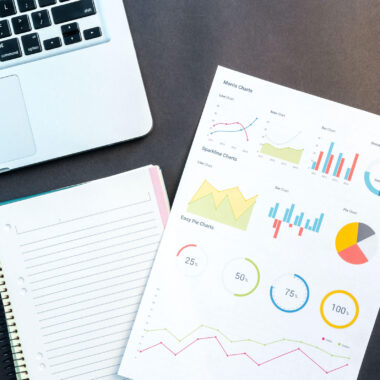Big Data is a broad phrase that refers to the collection of data in big pools that is used in today’s global business sector. It is a collection of data acquired by enterprises that is organized, semi-structured, and unstructured.
Data storage and processing technologies are required for big data. As a result, these systems have become an integral part of many data management designs. Furthermore, they’re typically utilized in combination with big data analytics and application platform technologies.
Doug Laney, a well-known analyst, established the three main characteristics of big data — the three Vs – in 2001. They are as follows:
Variety in Volume and Velocity
The terms ‘value’ and ‘ integrity’ have now been included to the definition of big data.
The amount of big data that a corporation requires does not equal a certain data volume. They are, however, measured in petabytes, terabytes, or exabytes. This metric takes into consideration a significant amount of big data gathered over time.
Big Data and Its Importance
During their analysis, companies rely on big data to enhance customer service, marketing, sales, team management, and a variety of other normal activities. They use big data to develop cutting-edge goods and solutions. Big data is essential for making data-driven decisions that provide concrete benefits. With big data, businesses want to increase earnings and return on investment while positioning themselves as market leaders in their respective areas.
As a result, firms that use big data have a competitive edge over competitors that do not.
The following are some instances of how big data may benefit businesses:
Assisting businesses with the development of their advertising and marketing strategies and campaigns.
Improve lead conversion rates and consumer engagement.
It aids in the analysis of changing corporate purchasing, consumer, and market behavior.
Increase your market and client responsiveness.
Big data is being used by medical researchers to discover illness risk factors and symptoms. Doctors rely heavily on big data to better illness diagnosis and treatment plans. They also rely on information from social media sites, polls, electronic health records, and other government sources.
Big Data’s Original Sources:
Three key sources contribute a large portion of big data:
Data from machines
Social data and transactional data are two types of data. Additionally, businesses produce data internally through direct client interaction. This information is often kept behind the company’s firewall. It is then loaded into the management and analytics system from the outside.
Another important consideration when it comes to Big data sources is whether they are organized or unstructured. There is no standardized paradigm for storing and managing unstructured data. As a result, extracting meaning from unstructured data and making it business-ready demands significantly more resources.
Now, we’ll take a look at the three key sources of big data:
- 1. Machine Data: Machine data is created automatically, either in reaction to a single occurrence or on a regular basis. All of the data is gathered from a variety of sources, including smart sensors, SIEM logs, medical devices and wearables, road cameras, IoT devices, satellites, computers, mobile phones, industrial machines, and so on. Companies can track consumer behavior using these sources. The amount of data gathered from machine sources grows tremendously in tandem with the market’s changing external environment. This sort of data is recorded by the following sensors:Machine data also includes information produced by servers, user apps, websites, cloud programs, and other sources.
- 2. Social Information
It is derived from tweets, retweets, likes, video uploads, and comments published on Facebook, Instagram, Twitter, YouTube, Linked In, and other social media sites. The vast amounts of data created by social media platforms and internet channels provide both qualitative and quantitative insights into every aspect of the brand-customer relationship.Data from social media spread like wildfire and reaches a large audience. It collects data on client behavior as well as their feelings about products and services. This is why firms that use social media to interact with their target audience may establish a strong relationship with them. Businesses may use this information to have a better understanding of their target market and consumer base. This invariably improves their decision-making abilities. - 3. Transactional Information
Transactional data, as the name implies, is information obtained via online and offline transactions at various points of sale. Transaction time, location, items purchased, product pricing, payment methods, discounts/coupons applied, and other pertinent quantitative information relating to transactions are all included in the data.
The following are some of the sources of transactional data:
Orders for payment, invoices, storage records, and e-receipts
Business intelligence relies heavily on transactional data. The timestamp is a distinguishing feature of transactional data. Because every transactional data has a timestamp, it is highly volatile and time-sensitive. In other words, if transactional data is not used in a timely manner, it loses its credibility and usefulness. As a result, organizations that act quickly on transactional data might acquire a competitive advantage.
Transactional data, on the other hand, needs a specialized team of professionals to process, analyze, interpret, and manage data. Furthermore, for most firms, this form of data is the most difficult to comprehend.
What Is Big Data Analytics and How Does It Work?
To extract useful and valid insights from big data, companies must work around analytics applications, cooperate with data scientists, and communicate with other data analysts. They must also have a better comprehension of all accessible data. Finally, the analytics team must define what they intend to do with the data.
The following issues must be addressed by the team:
- Data collections are cleansed, profiled, transformed, and validated.
- These are a few of the most crucial first stages in data analysis.
- These are a few of the most crucial first stages in data analysis.
After all of the big data has been prepared and gathered for analysis, several machine learning techniques are used to apply a combination of sophisticated data science and analytics disciplines. This will aid in the production of outcomes that contribute to the expansion and development of enterprises.
The following are some extra stages that are excellent for large data analysis:
- Data science’s deep learning branch
- Exploration of data
- Analytics in real-time
- Modeling for prediction
- Analytical statistics
- Exploration of text
In addition, numerous types of analytics are employed to derive insights from large data. The following are some examples of analytics models:
- Data science’s deep learning branch
- Streaming analytics and data mining
- Modeling for prediction
- Analytical statistics
- Exploration of text
In addition, numerous types of analytics are employed to derive insights from large data. The following are some examples of analytics models:
- 1. Analytical Marketing: It provides useful data for developing marketing efforts, promotional offers, and other forms of customer outreach.
- 2. Analyses Comparative: It analyses consumer behavior indicators and allows for real-time customer involvement so that businesses may compare brands, goods, services, and company performance to their competitors. The following data is required for this analysis:
Information about the population
Data from transactions
Data on how people use the internet
Text data from surveys, feedback forms, and other sources.
Check out our big data classes if you’re a newbie who wants to learn more about big data. - 3. Analysis of Public Opinion: It focuses on consumer input on a specific product or service, as well as client satisfaction and suggestions for improvement.
- 4. Examining Social Media: This study looks at people’s answers on social media platforms when it comes to their preferences and choices for a specific service or product. This study aids firms in identifying potential issues and correctly targeting the right people for all of their marketing activities.
Conclusion
In today’s world, big data is the lifeblood of enterprises. Big data analysis aids businesses in developing current and future growth plans. It’s essential for analyzing the market and determining client wants.
Big data’s core dynamics are no longer just based on data engagement. The greater picture is to find trustworthy strategies to boost data creation in the next few years in order to acquire more comprehensive and reliable insights.








